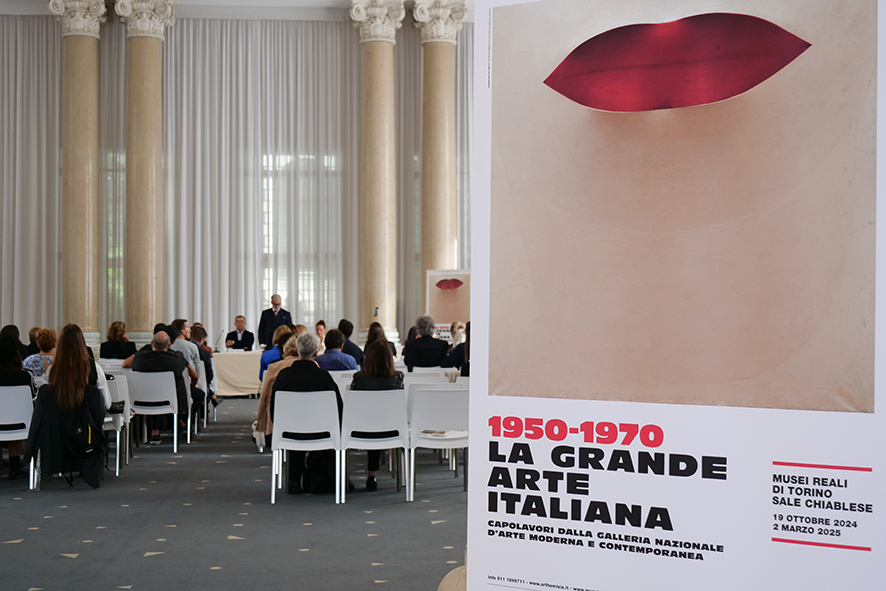Gathered for the first time outside its usual museum, the National Gallery of Modern and Contemporary Art in Rome, the vast collection of works (79 in total) will offer the public the chance to witness the artistic expressions of an unrepeatable era. Among the artists who best represented their art during the two decades covered are: Lucio Fontana, Alberto Burri, Mimmo Rotella, Michelangelo Pistoletto, Mario Schifano, and Piero Manzoni.
Produced by the Royal Museums and Arthemisia in collaboration with the National Gallery of Modern and Contemporary Art, the exhibition, curated by the Director of the G.n.a.m. Renata Cristina Mazzantini and scholar Luca Massimo Barbero, was made possible thanks to Mario Turetta, head of the Department of Cultural Activities at the Ministry of Culture and delegated director of the Royal Museums of Turin.
“The exhibition aims to highlight,” explains director Mazzantini, “the often underappreciated quality of the G.n.a.m.’s collections while drawing attention to the key role the Gallery played in building the Italian modern and contemporary art heritage.”
The exhibition route clearly highlights the origins of what was a true artistic movement that broke with the past.
“It is an intense journey,” says Luca Massimo Barbero, “and, through multiple rooms, it becomes a real body-to-body encounter between the new masters of post-war Italian art, whose roots are explored here. For the first time, it will be possible to compare them outside of the G.n.a.m. collection. For Italian art, these are the seminal figures, now recognized as international interpreters of contemporary art at the time.”
Divided into twelve rooms, the exhibition unfolds through a journey that offers comparisons between the most important Italian artists, who have become significant figures in the international art scene.
The exhibition opens with two symbolic works: one by Ettore Rolla with Rilievo con bulloni (1958/1959) and the other by Pino Pascali with L’arco di Ulisse (1963). It continues with Giuseppe Capogrossi, whose monumental work Superficie (1963) stands out. The following room explores the theme of matter, a fundamental element of research in the 1950s. Two Concetti spaziali-Buchi by Lucio Fontana, including one from 1949, are juxtaposed with the extraordinary Gobbo (1950) by Alberto Burri, and then works by Ettore Colla, Mimmo Rotella, and Bice Lazzari’s abstract research.
Two rooms then compare two great artists of abstraction: Afro and Piero Dorazio, masters who contributed to the success of Italian art in the United States in the post-war period.
But the cornerstone of the exhibition is the comparison between two undisputed leading figures of the era: Lucio Fontana and Alberto Burri. Eleven works by these two artists are featured, establishing a unique juxtaposition between Concetto spaziale.Teatrino (1965) by Fontana and Nero cretto G5 (1975) by Burri. To emphasize the importance of contemporary art, another room is dedicated to the mirror painting I visitatori (1968) by Michelangelo Pistoletto, and yet another to the famous Cancellature by Emilio Isgrò.
The journey continues with Mario Schifano, featuring Incidente D662 (1963), and Pino Pascali’s Primo piano labbra (1964), alongside other masterpieces such as Ricostruzione del dinosauro (1966) and Bachi da setola (1968).

